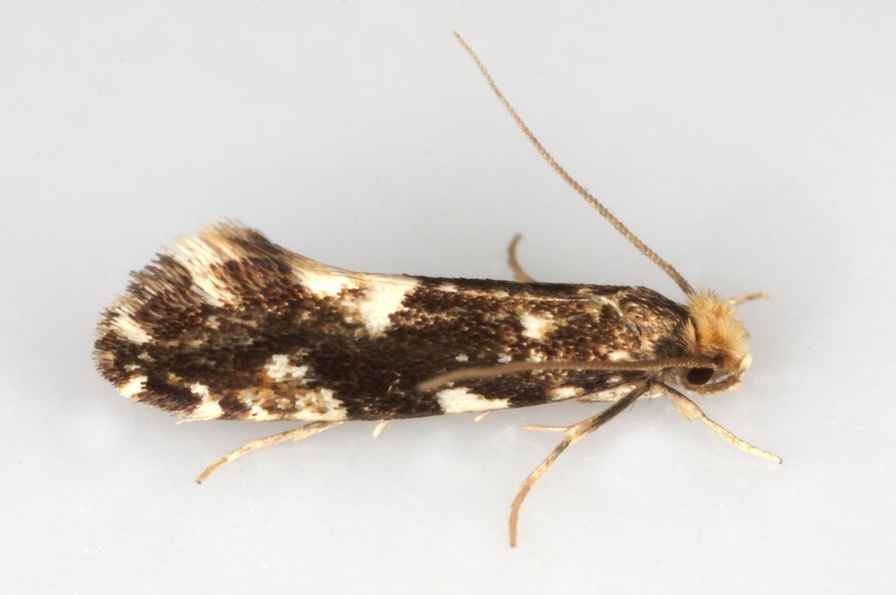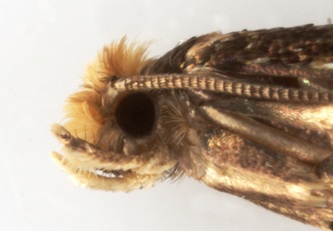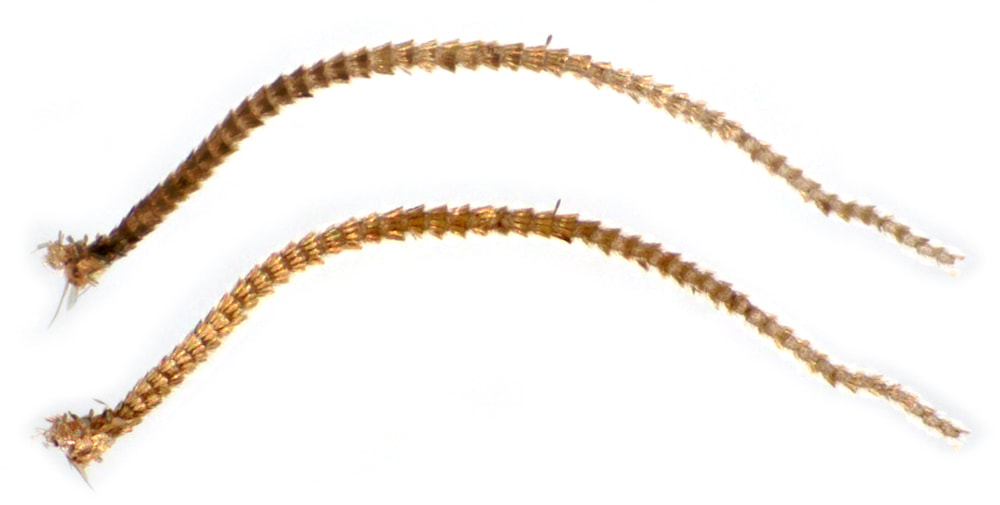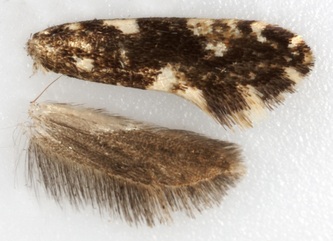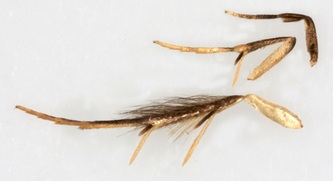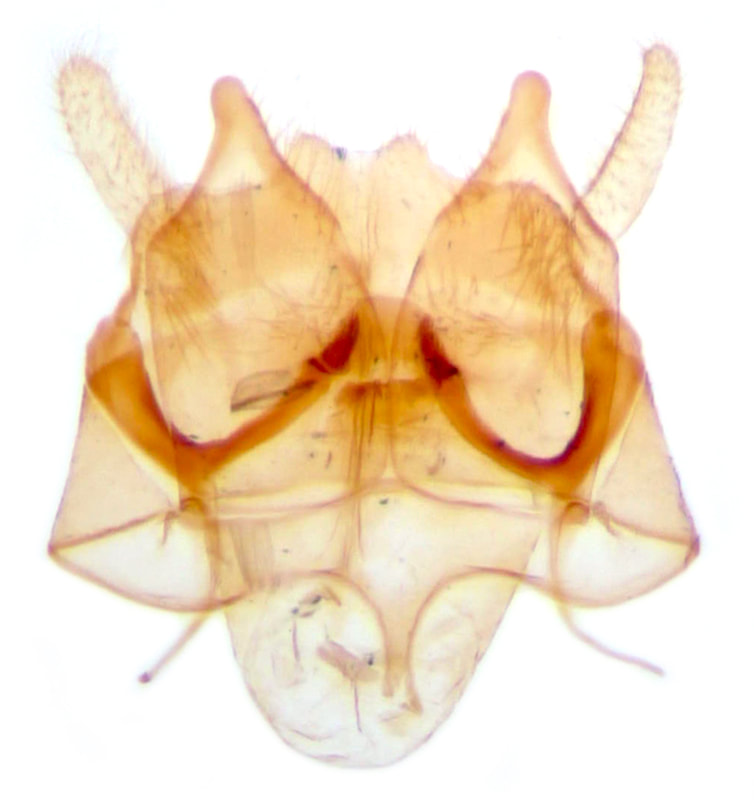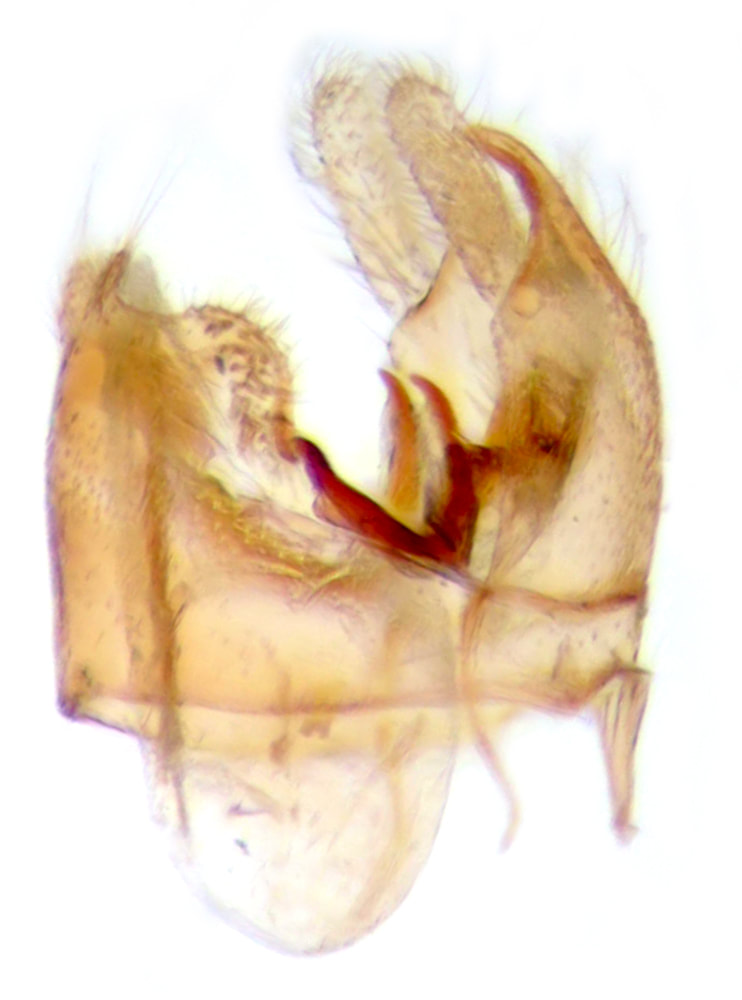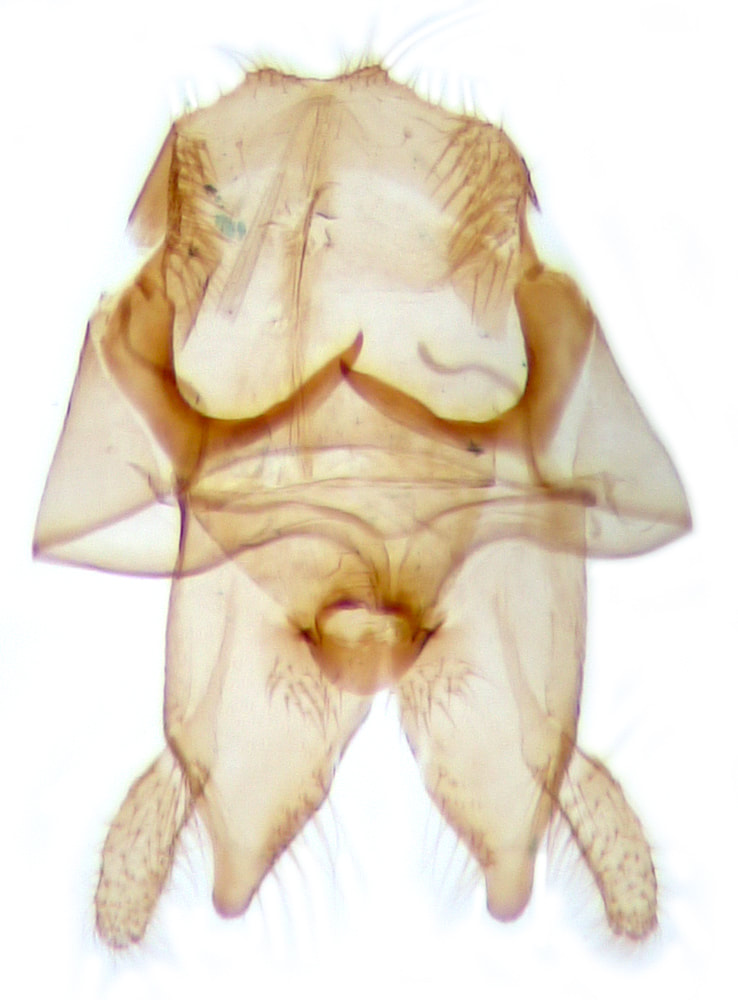12.017 Nemapogon koenigi (White-speckled Fungus Moth)
ws: 10-14mm; Jun-Jul; flies late afternoon to dusk; local and scarce in S.England
Synonym: Nemapogon wolffiella
Synonym: Nemapogon wolffiella
ID: According to MBGBI2, N.cloacella has an anvil-shaped dark mark on the costa at 1/2; in N.koenigi the ground colour is more uniformly dark so that this dark costal mark is not clearly defined - but this may not be entirely reliable.
Male genitalia: N.cloacella and N.koenigi, and other Nemapogon species are figured in MBGBI2 and there are images at Moth Dissection. I will only consider N.cloacella vs N.koenigi here. In MBGBI2 they are said to be distinguished by "the shape of the gnathos arms" - other than that no description is offered. I propose 4 consistent differences on the basis of the figures and images and my own material:
A: The gnathos arm is angular with a lateral section in the long axis of the genitalia and a transverse medial section and a short projection at the "elbow" where these two components meet. In N.cloacella there the medial section is slightly shorter than the lateral section; and the medial section shows a distinct kink posteriorly towards the apex. In N.koenigi the medial section is distinctly longer than the lateral section; and the medial section is smoothly curved towards the apex.
B: In N.cloacella the apex of the valva is obliquely truncate with the lateral margin extending further than the medial margin. In N.koenigi the apex of the valva is evenly rounded.
C: In N.cloacella the juxta has a medial notch, while in N.koenigi it is evenly domed.
Female genitalia: Illustrated in MBGBI2 (p176) and shown at Moth Dissection, but neither source clearly describes or indicates the key distinguishing features. The main differences illustrated in MBGBI2 are:
A. shape of the sterigma - elongate in N.cloacella, quadrate in N.koenigi
B. a central protrusion of the ventral margin of the ostium in N.cloacella, this being transverse without a central protrusion in N.koenigi. This differences is also indicated with an arrow in a Moth Dissection image of N.cloacella, however one of the images of N.koenigi at Moth Dissection also shows a central protrusion, casting some doubt on the validity of this feature for distinguishing the species
Male genitalia: N.cloacella and N.koenigi, and other Nemapogon species are figured in MBGBI2 and there are images at Moth Dissection. I will only consider N.cloacella vs N.koenigi here. In MBGBI2 they are said to be distinguished by "the shape of the gnathos arms" - other than that no description is offered. I propose 4 consistent differences on the basis of the figures and images and my own material:
A: The gnathos arm is angular with a lateral section in the long axis of the genitalia and a transverse medial section and a short projection at the "elbow" where these two components meet. In N.cloacella there the medial section is slightly shorter than the lateral section; and the medial section shows a distinct kink posteriorly towards the apex. In N.koenigi the medial section is distinctly longer than the lateral section; and the medial section is smoothly curved towards the apex.
B: In N.cloacella the apex of the valva is obliquely truncate with the lateral margin extending further than the medial margin. In N.koenigi the apex of the valva is evenly rounded.
C: In N.cloacella the juxta has a medial notch, while in N.koenigi it is evenly domed.
Female genitalia: Illustrated in MBGBI2 (p176) and shown at Moth Dissection, but neither source clearly describes or indicates the key distinguishing features. The main differences illustrated in MBGBI2 are:
A. shape of the sterigma - elongate in N.cloacella, quadrate in N.koenigi
B. a central protrusion of the ventral margin of the ostium in N.cloacella, this being transverse without a central protrusion in N.koenigi. This differences is also indicated with an arrow in a Moth Dissection image of N.cloacella, however one of the images of N.koenigi at Moth Dissection also shows a central protrusion, casting some doubt on the validity of this feature for distinguishing the species
§1 Hockley woods, Essex, 14/06/2008, male; fw 6mm
§2 Pound Wood, Essex; 04/06/2020; male; fw 4.8mm; netted by day
§3 Stour Wood, Essex; 8/07/2021; male; fw 4.9mm; netted late afternoon
All images © Chris Lewis
§2 Pound Wood, Essex; 04/06/2020; male; fw 4.8mm; netted by day
§3 Stour Wood, Essex; 8/07/2021; male; fw 4.9mm; netted late afternoon
All images © Chris Lewis
Page published Feb 2011 (§1) | Species name changed 13/06/2018 | §2 added 12/06/2020 | §3 added 06/08/2021 | text amended 28/06/2023
